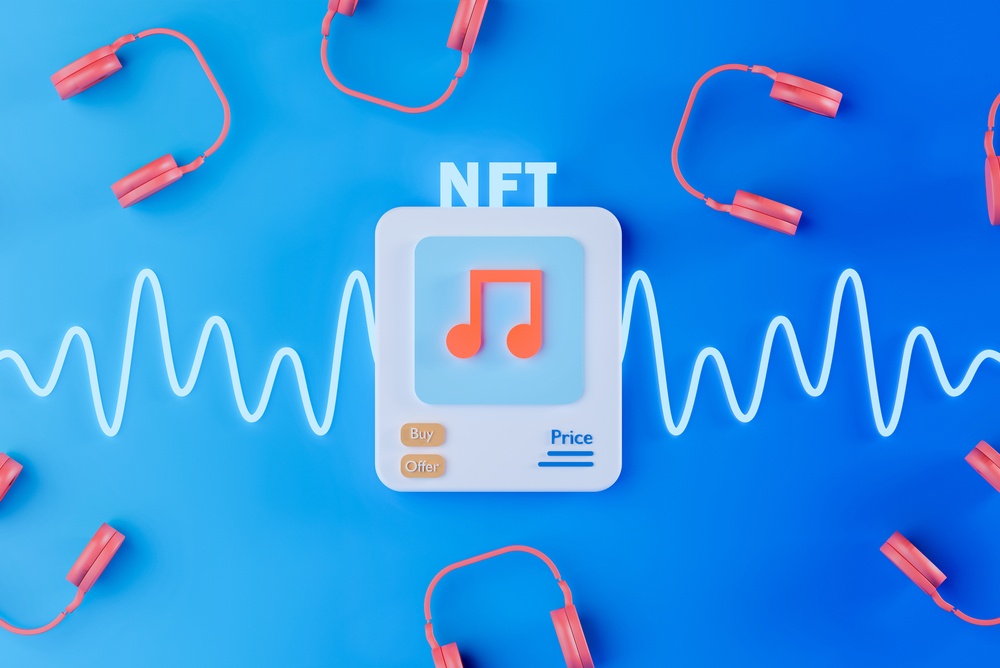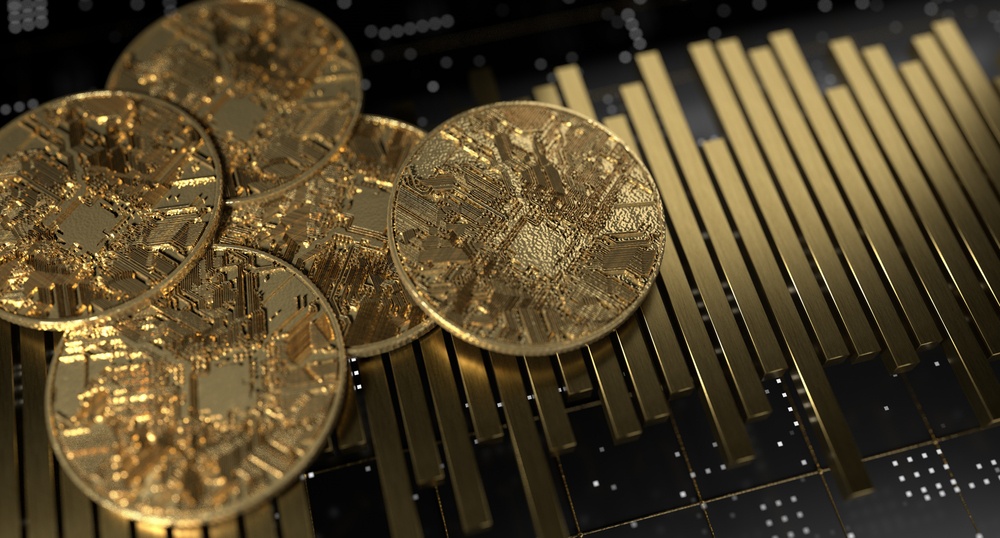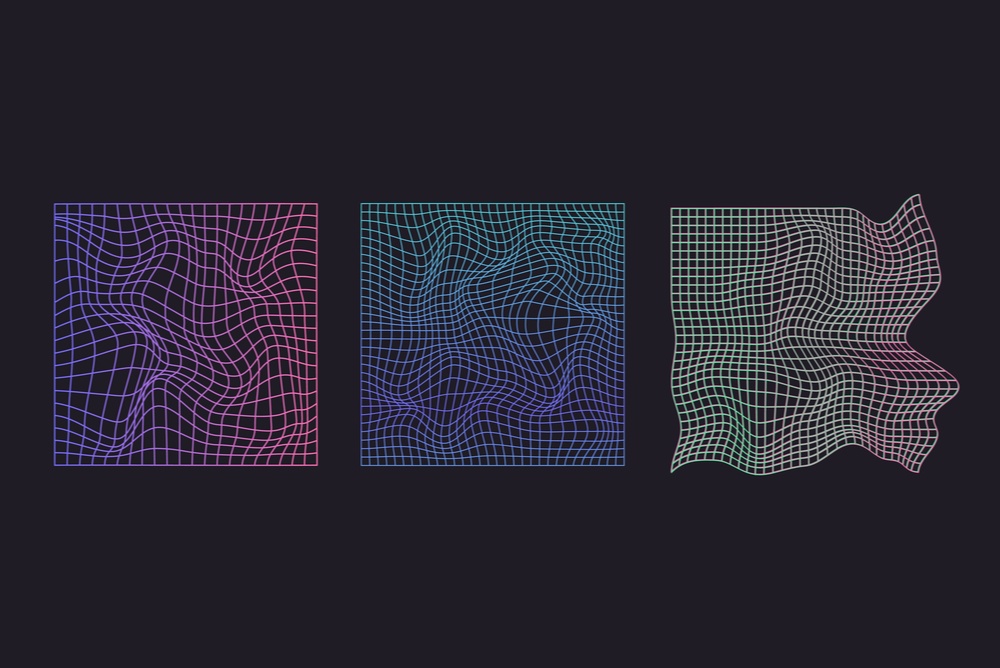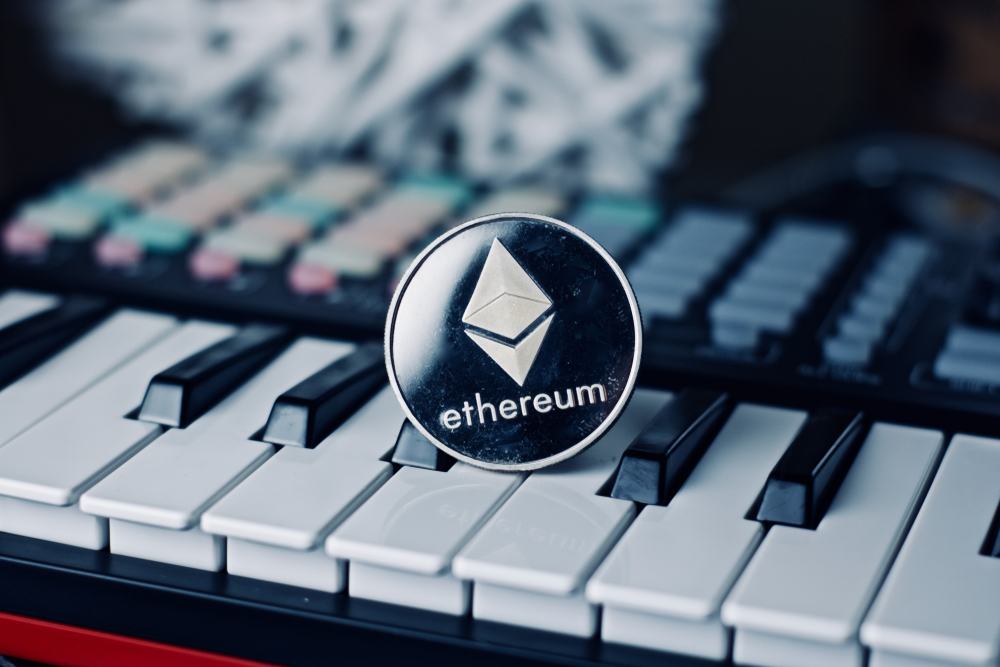
NFTs can be a high-dollar, high-risk, lingo-laden world of hype, rug pulls, and vapor projects. When most people think of NFTs, they think of digital images, you can also mint music as an NFT as well. When you understand what an NFT is and how it works (broadly), it makes sense.
—>>Build An Income-Generating Website That Lasts Decades!
—>>Watch how I built my business step-by-step in a few minutes.
—>>Earn online income for a lifetime.
>>Start Now<<
Hopefully, once you’ve read through this you’ll have a better understanding of what a music NFT is, why you’d consider minting your music, where to find music NFTs, what’s not so great about them, and what the future holds.
- How To Make Money Minting NFT Music
- What Is A Music NFT?
- Benefits of Music NFTs
- Rarity
- Selling Limited Edition Digital Music
- Collectability
- Utility
- Music NFT Platforms
- FanFare.FM
- Melos.Studio
- Rocki.app
- Custom Music NFT Minting Websites
- Negative Aspects of Music NFTs
- Can You Really Make Money Minting Music NFTs?
- Getting Started Minting & Getting Support
- The Future of Music NFTs
How To Make Money Minting NFT Music

What Is A Music NFT?
To clear some of the confusion right away, image NFTs and music NFTs are not the same things. A Music NFT is an exclusive piece of music that can be listened to. There is some confusion when musicians mint image NFT, but the subject of an image NFT doesn’t change the fact that it’s a still image.
The main difference here is that a music NFT can be played like a regular song. A music NFT is an actual song that you can play and listen to. Under the hood, the music NFT is actually just an mp3.
So what makes it an NFT?
Using a music NFT platform, you can “mint” an exclusive copy the mp3. The platform is still required to host the mp3, and you must listen to the mp3 on the platform as well. The “non fungible” part is the hash on the blockchain. It’s basically a digital receipt saying that you purchased this song.
Similar to image NFTs, someone could still potentially record or download the song without owning the NFT key. Ownership of the hash also does not convey any type of copyright ownership, including the ability to distribute, modify, or make money from the music.
Benefits of Music NFTs
Once you understand what a music NFT is, the endless well of ideas begins to open up. The core technology of what an NFT is still exists of course, but rather than a static image, this NFT is a digital audio file.
To back up for just a second and provide an analogy, creating music NFTs is a bit like having a vinyl record cutter. Musicians can mint NFTs in a similar fashion to how records are pressed. Vinyl records often have limited pressed, special artwork, and other facets that separate them from some new song uploaded to Spotify. Stay with this analogy for a moment, we’ll come back to it.
One thing that’s so special and important about NFTs is the ability to buy and sell digital files in limited quantities. There is a ton of things you could potentially do with this, but I think the most interesting is to disintermediate record labels and other mechanics of the traditional music distribution process. This has largely been done to digital files already with websites like Soundcloud and Bandcamp, but NFTs allow artists to mint exclusive material as well, without the negatives of physical music distribution.
Rarity, the ability to sell limited edition digital music, collectability, and utility are some broad NFT music ideas to think about.
One thing to note is in many ways a music NFT still acts and behaves a lot like any other mp3 would. The platforms that you mint the NFT to have a player for the song that potential buyers can use to check out the track. Different platforms and artists are handling and viewing this in their own ways. Some provide song snippets, others only release music as NFT. I don’t know if there’s a wrong way to approach music NFTs yet. We’re all still learning.
Rarity
If a musician were to upload a song to Bandcamp and sell it to the world they would most likely upload an mp3 and place a price on it, something like $0.99. If things went (very) well, maybe one million copies of the song could be sold. Maybe it didn’t go quite so great and the artist only sold three copies. Maybe it was even over a million. The point is it’s basically an infinite amount of songs available.
Plus, each song is the same as the next. I mean, it kind of has to be, right? We’re just talking about the standard distribution of a digital song. It’s one file, and everyone has unlimited access to it.
In this brave new world of music NFTs, things get quite a bit more interesting. We’ll stay at the surface level here, but NFTs are always unique. Meaning each copy of the song is unique.
It is a little confusing because one NFT song could have ten copies “minted” and made available to purchase.
The contents of these NFT songs are indeed the same, i.e. it’s the same mp3 file is associated with the NFT, but the mint number is different. This is the hash, provided by the blockchain. The NFT is a certificate of ownership of a particular piece of digital artwork, so basically you can own edition #1 or edition #100 of a song/album/clip. This ID makes it unique among others like it.
When the NFT is purchased, you can then use a crypto wallet to secure access to the music. The mp3 file is stored on the appropriate platform (not cross compatible), and then your wallet acts as a “key” to access the file.
The important part and how it all comes together to represent rarity. Music NFTs are sort of like a limited vinyl release. Some original presses become extremely valuable over time.
In a way, minting music NFTs is a bit like having a digital vinyl cutter. The musician decides how many copies to sell and what the price will be. Labels have traditionally handled this part, with the musician getting something like a 5% royalty payout.
Music NFTs stand in direct opposition to the days of yesteryear with labels. Now the musician gets all the proceeds from the sales of their music. In addition, they get up to 10% of secondary royalty sales. As an independent artist, this also means you’ll be in charge of distribution and marketing, which comes with its own set of challenges. Alternatively, though I haven’t seen a lot of this yet, there may be an emergence of digital NFT music labels that may have more beneficial representation terms than traditional labels that had the market cornered.
Imagine signing with a digital NFT label and having 1000 options across the globe, knowing that your listeners would have equal access to your music no matter where they were. Contrast that with traditional labels where you’d have few or no local options compared to big cities like LA and New York where big labels dominate.
Selling Limited Edition Digital Music
As you’ve learned, music NFTs can be rare because they’re unique. In addition to having a rarity aspect, they can also be resold. It’s part of the reason they exist. This future marketability can add profit dynamics to the marketing strategy of your digital music. Imagine if listeners could not only benefit from enjoying your music, but the music could also have some future resale value as well.
Again, with the vinyl example. I know that if I buy a limited edition 200 presses vinyl record for $25 right now, there’s a good chance I can sell that same vinyl (opened and played!) for $50 later. Of course, this is with records that sell out and are no longer available as a repress. At the very least, I could sell a used vinyl record at a discount to someone who will pay for a used record instead of a brand new one.
NFTs are certificates of ownership over a particular digital file. This certificate can be transferred from one wallet, or person to another.
If you were to purchase a song or album from iTunes you wouldn’t be able to sell it back to the record shop or trade it with a friend. Apple won’t even take it back; it’s now yours forever.
With NFTs now digital versions of music can be bought, traded, and re-sold the same way you would with other real-world music formats. For instance, a smaller, unknown artist may release a hit single and later become world-known. The first NFTs they released might increase in value as the musician’s career grows.
Maybe you got lucky and bought a musician’s NFT and it increased in value over time. Your tastes changed and you want to explore and collect music from a different artist. NFTs now present this option for digital music files in the way it existed with tangible media through the ability to resell the media.
Collectability
Traditional digital music doesn’t offer much in terms of collectability. For the most part songs and albums have an infinite amount of copies that can exist. This isn’t the case with music NFTs. Each time an NFT is purchased the transaction is stored on the blockchain forever. That transaction record is your certificate of ownership for that piece of music.
The rarity from limited copies of music NFTs and general perception of an artist are what give an NFT collectability. Each copy of a music NFT is unique. If 10 were created for sale and those will be the only ten ever, the NFT will most likely be collectible. Scarcity is what makes tangible and intangible objects and items collectible.
The value ascribed to an NFT is based on its collectability as well. This ties back into the rarity factor again. NFTs get their value from the perception of their worth by collectors.
As mentioned before, iTunes or Bandcamp doesn’t really offer a true collectible way to distribute music. The songs purchased on these platforms cannot be resold or traded, legally anyway.
For the first time in history, musicians can add a collectability factor to digital releases of their music.
Utility
NFT utility is a hot topic in early 2022. It started to become a hot ticket item in 2021 with the surge of music NFT popularity and news. Musicians are still figuring out how to provide utility via NFT. Some are leaning on the utility aspect of music NFTs and claiming it’s really the way they should be used. Others say the utility is simply the music itself. Personally, I think the space is still new and being explored, and we may see some type of utility reimagined in the future.
A few ways utility is being provided are: buyers of a music NFT also receive shirts, passes to shows, paired tangible releases of the music, and all kinds of other crazy strategies.
Some of this starts to fall back on the wider implications of the possibilities with NFTs outside of music. Things like ticketing, passes, and so on being sold as NFTs have been making headlines as well. Again, musicians and music buyers get to disintermediate ticket venues to cut down on costs for buyers and pay more money direct to artists.
Musicians should be looking for ways to provide utility to their NFT collectors and fans. It could be a make-or-break decision for buyers. Ask yourself, what’s the reason my fan would really want to buy this thing?
The process and idea are the things I love. What I don’t love is the use of blockchain for this. The purpose of a blockchain is to provide an immutable, open, permissionless ledger of transactions. When you are using music NFTs as a way to sell t-shirts and concert tickets, what you have is an ecommerce business. You could do the same thing with a basic WordPress website and ecommerce plugin. We don’t need the blockchain to get this done.
If you think the blockchain and NFTs is going to make your music career explode, I don’t think that’s the case. Anything you want to do with music NFTs on the blockchain you do can with some very basic “web2” skills.
Music NFT Platforms

About every other day a new NFT platform pops up. There are platforms specific to music NFTs that musicians should focus on. The wider NFT platforms and marketplaces are saturated with all kinds of other NFTs.
There are really three main music NFT platforms at this time of this writing. More than three exist and are getting started every day. I have personally minted and sold NFTs on all the platforms listed below so I feel comfortable referring you to them.
FanFare.FM
If you’re new to music NFTs and want to get started now, just use FanFare. It’s the easiest to use and fastest to get started with.
The team is amazing and there is a Discord available with a support channel. FanFare works with credit cards basically, so there isn’t a large crypto learning curve.
Melos.Studio
Melos.Studio is a really nice, full-featured platform on the Binance Smart Chain. This means you’ll need to understand crypto a bit to use Melos.
One amazing thing about Melos is they really help promote the artists that sign up and use the platform. They’re helping smaller musicians get noticed and it’s absolutely amazing.
Rocki.app
Rocki works with its own native token. It’s pretty cool and you can stake it and earn as well. Again, you’re going to need to have some pre-existing crypto knowledge to really use Rocki.
Rocki has an Artist’s Relief Fund that I’d recommend checking out. It’s one of the pluses of the platform.
Custom Music NFT Minting Websites
There are two roads that music NFTs can exist upon. One exists on the music NFT platforms. The other is a bit of a different animal: custom smart contracts and a minting website. This path is going to be for people extremely interested and vested in music NFTs. This road will require more time and money to get in place.
Unless you’re a web developer or programmer then you’re probably not going to create your own custom smart contracts. I wouldn’t recommend most people take this path. This isn’t just any old code. This code has financial ramifications for your mistakes and bugs. The financial ramifications aren’t just yours either, they could potentially be your fans. I’m not sure about you, but I in no way shape, or form want to get my fans into a financial debacle.
To take this path it’s probably best to hire a professional, which is not going to be cheap at all. If someone tells you it is, you might want to really look into that a bit more. Just because someone says they can do something, doesn’t mean they can. Even high level, expertly coded smart contracts get exploited from time to time.
Most of the music NFT projects that have made the news were this variety. That’s part of the equation many people are missing. Large artists with huge budgets shelled out the money for the full NFT vehicle including all of the marketing and hype.
That’s why those projects performed so well. Many of the smaller musicians creating NFTs haven’t seen such success. These smaller musicians are mostly on the platforms listed above. There’s a distinction between large musicians and small musicians and where they sell NFTs. It’s almost a completely different game.
Negative Aspects of Music NFTs
There is a slew of bad press surrounding NFTs in general. Everything from killing the Earth to people calling them “scammy” or “slimy.”
As someone who has minted and sold over 100 music NFTs there is nothing scammy or slimy about the creators, process, product, or collectors. That doesn’t mean there aren’t many fake projects, rugpulls, and scams. This is still crypto. You just have to cut through the noise to find the signal.
Another battle to face with NFTs is education. A good percentage of the general public is still skeptical and they don’t understand the technology. This can leave the responsibility of educating fans to the musician. Why would I buy an NFT of a song when I can get it for free on Spotify? That type of stuff. This attitude may change in the coming years as utility and clarity comes out of the NFT space as a whole.
The technological hurdle of crypto is another issue musicians face getting started with music NFTs. A basic understanding of crypto is required. As explained before custom smart contracts and minting websites add even more complexity.
For example, there is currently a real challenge with ability to handle proper splits. This would be when you want to pay each person involved in the music a certain amount. Each musician in the band may get a certain amount of money, but also the label, the producer, and any other party involved.
A great example of this is beat makers looking to replicate the model from Beatstars. There is no equivalent at this time; not with the platforms in place now. It can be done, but you have to write your own custom smart contracts. Keep this issue with splits in mind because it can be a make-or-break decision for you. The money made from NFT sales can be split, but it’s a manual, human process.
Can You Really Make Money Minting Music NFTs?

Yes, it’s absolutely possible to make money minting music NFTs. One of the most important aspects of actually selling NFTs is marketing. This applies to all music, but it’s especially important with NFTs.
For musicians who already have a large fan base the custom smart contract and minting website is most likely the best path. Musicians with smaller fan bases, and budgets, will probably want to use one of the music NFT platforms. Beyond that, you need to realize that you’re still in competition with millions of musicians, and you need plan to get your music in front of them. Hitting “publish” and hoping for the best isn’t really a strategy.
It’s important to do some planning prior to minting music NFTs. Having a plan for community building, utility, release strategy and marketing is fundamental to a successful music NFT drop. Be sure to do proper research and have a clear plan before you start the process of minting music NFTs.
Music NFTs are exciting for the fact that they open up a new audience for musicians. Collectors, investors, plus crypto and NFT enthusiasts might purchase music NFTs as a speculative investment. Collectors and investors are actually extremely great fans to have. Typical music fans enjoy the songs and persona of their favorite artists. They don’t always spend a lot of time thinking about how they can help the artist in terms of their career.
NFT collectors have a different relationship in a way. They’re generally going to be more invested in the long-term career of a musician. It’s like an investor of a business. Investors in businesses gain by supporting and helping artists. It doesn’t make sense for anyone to invest in a business and not help it reach its full potential.
In a hypothetical scenario, someone who sees potential in an artist could buy some first edition NFTs then provide them with their own skillset to help promote the music. What if a web developer who loves your music built a website to help you market it? What if an experienced business owner knows how to run Google Ads for search engines? What if another musician who doesn’t own a label has some connections for you? Each one of these “stakeholders” in your music could benefit themselves and yourself. These are the potential scenarios I see playing out for NFT musicians.
Musicians getting into the music NFT space should leverage NFT collectors. They should seek them out for advertising opportunities. It’s definitely a bit strange thinking of music like stocks, but it’s the future we live in.
Getting Started Minting & Getting Support
The quickest and easiest path to minting NFTs is through FanFare.FM. Register to be an artist. Sign up for and install the Blocto Wallet as well.
FanFare.FM is extremely user-friendly and they offer support through their Discord. There is no fee to mint music as NFTs through the platform and minting is handled through credit card. There is no crypto hurdle with FanFare.
Twitter and Discord are the best places to advertise and “shill” NFT projects. It’s important to be present on Twitter and build relationships with others in the web3 and NFT communities.
Marketing and hyping up the minted NFT is the path to sales. Don’t expect to mint and NFT and instantly become crypto rich, even if you have a large fan base. If no one knows your NFT exists they have no way to buy it.
So, it is definitely possible to make money minting and selling music NFTs. I’ve personally sold over 100 of them within a few months. It took an insane amount of organic promotion and marketing.
One key thing to consider is the price you’ll sell music NFTs. There are two paths here one being the high dollar route seen in the wider image NFT world. The other is to use NFTs as a distribution vehicle and price the NFTs the same as traditional digital music. As a smaller artist myself I’ve seen the distribution vehicle method work better.
The Future of Music NFTs
The future of the Metaverse and music NFTs is interesting to think about. There’s a lot of speculation around this entire scene, and rightfully so. There’s a lot of potential, and plenty of exciting opportunities for artists to support themselves.
As people adopt crypto and the overall confusion around NFTs dissipates the scene will stabilize. In ten years, we probably won’t even say NFT, it’ll just be commonplace, like MP3. Most people just refer to an mp3 as a song, but that wasn’t always the case.
Once more hardware starts to emerge and makes it into widespread use, music NFTs will be a different experience. The possibilities are really endless at this point. The more you look into the Metaverse the deeper it goes.
What’s up ladies and dudes! Great to finally meet you, and I hope you enjoyed this post. Sign up for my #1 recommended training course and learn how to start your business for FREE!
